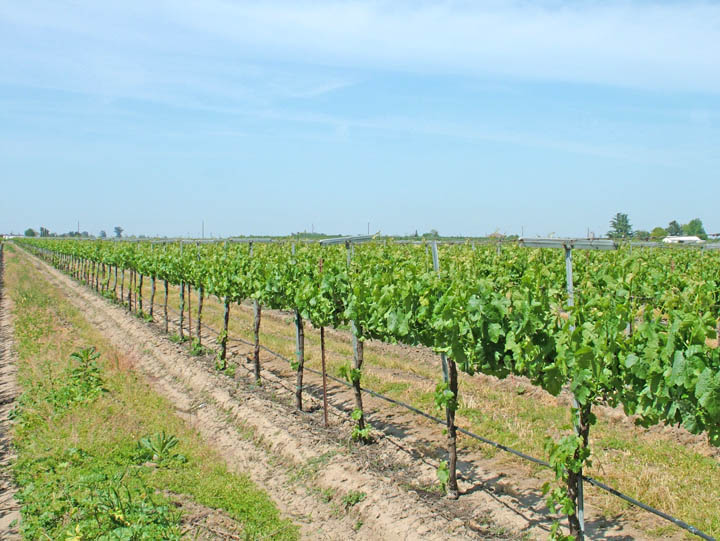
California’s Central Coast premium wine crop was no doubt severely impacted by a frost three months ago, but long-time coastal vineyard manager John Crossland says it could have been worse.
“There’s a real sense of loss in this area from the short crop,” Crosslland told GrapeLine, an e-newsletter distributed by Western Farm Press. “But, on the other hand, demand and prices of the grapes are both up, and that bodes well for the future.”
Crossland’s Vineyard Professional Services, Templeton, Calif., provides management and consulting services for vineyards in the Paso Robles area of San Luis Obispo County and southern Monterey County.
He’s heard of losses on individual vineyards as much as 70 percent to 80 percent.
“One grower said it was probably the greatest amount of frost damage he’s seen in the 35 years he’s been in the Paso Robles area,” he says. “He’s probably correct. I’ve heard of a lot of vineyards that expect to produce no more than 2.5 to 3 tons of grapes per acre this season. That’s about a 50 percent loss.”
“Some growers here are concerned that damage from this year’s frost will affect the crop for more than one season,” he says. “But, experience tells me we have a good chance of normal growth and production next year. I like to think of the glass as half full.”
Crossland was featured in a July edition of GrapeLine.
You can read more about what Crossland had to say about the killing frost by visiting back issues of GrapeLine at http://subscribe.westernfarmpress.com/subscribe.cfm?tc=NNWEB where you can also subscribe to future, exclusive in depth issues. Mailed twice monthly through September, the e-newsletter is sponsored by Chemtura AgroSolutions.
North Coast Pinot Noir
In another edition of GrapeLine, Sonoma County, Calif., grower Mark Houser saw something in late May and the first part of June he hadn’t seen in 30 years of grape growing grapes — his seven acres of Pinot Noir looked like they were covered with yellow flowers.
“The vines should have been green,” says Houser, who manages grape production at Hoot Owl Creek Vineyards and Alexander Valley Vineyards, Healdsburg, Calif. “But, at bloom, suddenly the tops were a bronzy, yellow color.”
It was caused by new growth of leaves on tops of the shoots, replacing those that had died from an unexplained malady that appeared not only in his area of Sonoma County, Alexander Valley, but also in the Carneros Region and Russian River Valley.
“It was quite specific to Pinot Noir,” he says. “In fact, the two Zinfandel vines in the middle of that block showed no symptoms.” It also affected other Pinot relatives to some extent, including Pinot Munier and Pinot Blanc. But, the symptoms varied among the Pinot Noir clones. In this case, the 115,777 and Pommard clones seemed to lose more leaves than 2A.
SJV table grape demand
This season’s San Joaquin Valley table grape was late, but it started off strong, according to Dave Clyde, president of Stevco, a major valley fresh grape producer.
The season started about 10 days later than usual, it began on a high note. “Overall, the crop looks very good; we have good berry size and good production, and demand is better than we’ve seen in the last few years.”
That unusually strong demand reflects about a two-week gap in the supply of grapes between the end of the harvest in the desert table grape producing areas (Coachella Valley and Mexico) and the San Joaquin Valley.
Normally the two overlap. But this year, Clyde explains, consumers stepped up demand for the late-season desert grapes to make up for the lack of cherries from Washington, where weather delayed development and harvest of that crop. In fact, the first Washington cherries were scarce in stores until after July 4. In the meantime, many consumers kept buying more table grapes for fresh fruit.
“They cleaned out the stockpiles of table grapes, which has really left us in a short supply situation as the San Joaquin Valley season starts.”
You can read more about what these California grape industry leaders have to say by visiting back issues of GrapeLine at http://subscribe.westernfarmpress.com/subscribe.cfm?tc=NNWEB where you can also subscribe to future, exclusive in depth issues.
About the Author(s)
You May Also Like




